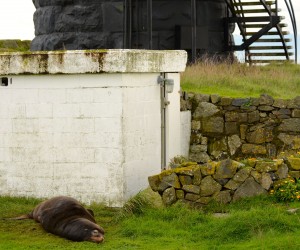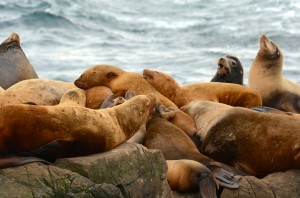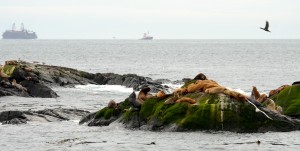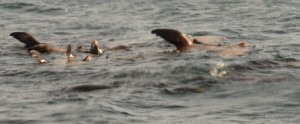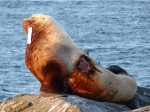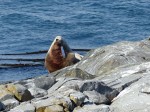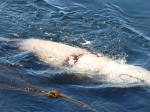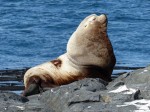The northeasterly wind picked up to 23 knots in the middle of day, producing a choppy swell with frequent whitecaps. Mixed with the inflowing tide, the standing waves off the end of the jetty became quite large. The barometer dropped steadily. There was a low cloud cover with a few scattered showers.
The Juan De Fuca Warrior from Ogden Point visited twice with two groups of four divers.
I prepared for tomorrow’s census by practicing my species identification and counting. The numbers will be double checked tomorrow and revealed on the log. The sea lions are proving difficult to count, due to their large cuddle puddles. Where does one sea lion begin and the other end?
I checked the underwater camera twice today. Both times there was a sea lion swimming across the screen just as it loaded, but I wasn’t fast enough to click the button to save the image.
Up on land, the california sea lion that was camped out by the desalinator bunker for the past two and a half days decided to move this evening. It must have got tired of waiting for the new desalinator pump. Don’t worry, it should be here by Friday. Just before sunset, the sea lion waddled on all four flippers eastward over the salt water cistern and down the rocks to the water. Taking many breaks along the 50m overland journey, it collapsed and exhaled large lungfuls of steamy breath.

